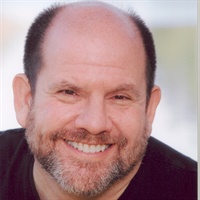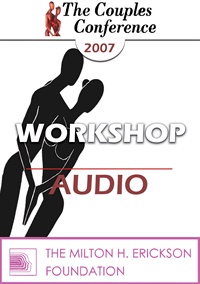CC07 Workshop 05 - Developmental-Psychobiological Approach To Difficult Couples - Stan Tatkin, PsyD
- Average Rating:
- Not yet rated
- Topic Areas:
- Workshops | Couples Therapy | Personality Disorders | Psychobiological Approach to Couples Therapy (PACT) | Developmental Psychology
- Categories:
- Couples Conference | Couples Conference 2007 | Pioneers in Couples and Family Therapy
- Faculty:
- Stan Tatkin, PsyD, MFT
- Duration:
- 2:17:46
- Format:
- Audio Only
- Original Program Date:
- Apr 27, 2007
- License:
- Never Expires.
Description
Description: A developmental-psychobiological approach to treating challenging couples, focusing on real-time regulation, attachment patterns, and nervous system dynamics. Emphasizing mutual expertise, quick repair, and interactive regulation, the model shifts from content-based conflict to addressing core relational deficits. Techniques include joint sessions, humor, video playback, and brief interventions for sustained progress.
Syllabus Description: This introduction to a developmental-psychobiological approach for working with personality disordered couples will provide attendees with a powerful new method that continues to show good success. This approach focuses on a two-person psychobiological model using attachment, developmental neuroscience and arousal regulation, and moves the clinician from a conflict-content model to a deficit process model focusing on real-time enactments of dysregulation.
Educational Objectives:
- To describe three interventions for regulating highly avoidant (narcissistic schizoid) partners.
- To describe three interventions for regulating highly angry and resistant (borderline/narcissistic) partners.
*Sessions may be edited for content and to preserve confidentiality*
Credits
Handouts
| Ericksonian Learning Snapshot (244 KB) | 2 Pages | Available after Purchase |
Faculty

Stan Tatkin, PsyD, MFT Related Seminars and Products
Stan Tatkin, PsyD, MFT, is a clinician, researcher, teacher, and developer of A Psychobiological Approach to Couple Therapy (PACT®). He has a clinical practice in Calabasas, CA, where he has specialized for the last 15 years in working with couples and individuals who wish to be in relationships. He and his wife, Tracey Boldemann-Tatkin, developed the PACT Institute for the purpose of training other psychotherapists to use this method in their clinical practice.


